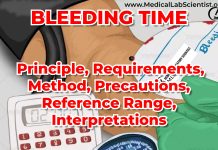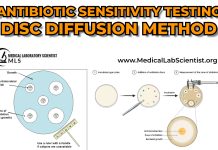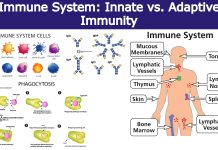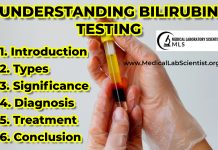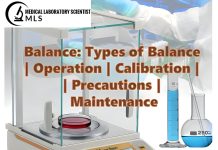UNDERSTANDING BILIRUBIN TESTING
Bilirubin testing assesses levels of a yellow pigment produced during red blood cell breakdown, aiding in the diagnosis and management of liver disorders and conditions affecting bilirubin metabolism. Elevated bilirubin may indicate jaundice or underlying health issues, guiding healthcare interventions.
INTRODUCTION TO BILIRUBIN:
Bilirubin stands as a vital pigment derived from the natural breakdown of red blood cells in the body. It plays a crucial role in the process of recycling old or damaged red blood cells, an essential function for maintaining a healthy blood supply. After the breakdown of these red blood cells, bilirubin is formed and travels through the bloodstream to the liver. Within the liver, bilirubin undergoes a complex series of transformations. The liver modifies bilirubin, converting it into a soluble form that can be efficiently excreted from the body.
Once processed, bilirubin is transported through bile a digestive fluid produced by the liver to the intestines. From there, it gets eliminated from the body through faeces, contributing to the yellowish color of stool. Elevated levels of bilirubin in the blood can indicate various health conditions, including liver diseases, issues with red blood cell breakdown, or obstruction in the bile ducts. Therefore, measuring bilirubin levels through blood tests serves as a crucial diagnostic tool, providing insights into liver function, blood cell health, and potential issues related to bile ducts.
The breakdown of bilirubin into its components total, direct, and indirect bilirubin allows healthcare professionals to decipher specific underlying conditions. Understanding these components aids in diagnosing liver disorders, assessing the breakdown of red blood cells, and identifying bile duct complications. Overall, bilirubin stands as a fundamental component of the body’s natural processes, serving as a marker for various health conditions when present in abnormal concentrations in the bloodstream.
WHY BILIRUBIN TESTING IS CONDUCTED?
Liver Function Evaluation: Bilirubin testing provides critical insights into the liver’s function. Elevated levels might indicate liver diseases such as hepatitis, cirrhosis, or liver damage affecting its ability to process bilirubin effectively.
Red Blood Cell Health Assessment: Conditions leading to increased breakdown of red blood cells, termed hemolysis, result in higher bilirubin levels. Bilirubin testing helps diagnose these underlying blood disorders.
Identification of Bile Duct Issues: Elevated bilirubin levels can suggest blockage or obstruction in the bile ducts, hindering the excretion of bilirubin from the liver to the digestive system.
TYPES OF BILIRUBIN:
Total Bilirubin: This measurement encompasses both direct and indirect bilirubin levels, offering an overall assessment of bilirubin concentration in the blood.
Direct Bilirubin: Direct bilirubin specifically quantifies the bilirubin that has undergone liver processing and is readily excretable.
Indirect Bilirubin: Indirect bilirubin represents the portion of bilirubin yet to undergo liver conjugation for excretion.
SIGNIFICANCE OF EACH BILIRUBIN COMPONENT:
Total Bilirubin:
Total bilirubin is the sum of both direct (conjugated) and indirect (unconjugated) bilirubin in the blood. Measuring total bilirubin levels is an important component of liver function tests and provides valuable information about various aspects of liver health and the breakdown of red blood cells. Here are the key points regarding the significance of total bilirubin:
-
Liver Function:
- Comprehensive Assessment: Total bilirubin levels offer a comprehensive assessment of the liver’s ability to process and excrete bilirubin. Abnormal total bilirubin levels may indicate liver dysfunction or impaired bilirubin metabolism.
-
Red Blood Cell Breakdown:
- Indicator of Hemolysis: Elevated total bilirubin levels can be indicative of increased breakdown of red blood cells, a process known as hemolysis. Conditions such as hemolytic anemia or certain genetic disorders can lead to elevated levels.
-
Bile Excretion:
- Bile Production: Total bilirubin includes both direct and indirect bilirubin, both of which are components of bile. The measurement of total bilirubin provides insight into the overall production and excretion of bile by the liver.
-
Diagnostic Marker:
- Liver Disorders: Total bilirubin levels are commonly measured as part of routine liver function tests. Abnormal levels can suggest various liver disorders, including hepatitis, cirrhosis, or biliary obstruction.
-
Jaundice:
- Overall Bilirubin Load: Jaundice, characterized by yellowing of the skin and eyes, is often associated with elevated total bilirubin levels. Jaundice can result from an imbalance in the production, conjugation, or excretion of bilirubin.
-
Monitoring Treatment Response:
- Liver Disease Management: Total bilirubin levels are monitored over time to assess the response to treatment in individuals with liver disorders. Changes in total bilirubin levels can indicate improvements or worsening of the underlying condition.
-
Neonatal Jaundice:
- Evaluation of Newborns: Total bilirubin levels are frequently measured in newborns to assess the risk of jaundice. Elevated levels may require monitoring and, in some cases, treatment to prevent complications.
-
Assessment of Liver Health:
- Overall Liver Health: Total bilirubin is an integral part of liver function tests, providing clinicians with information about the overall health and function of the liver.
Direct Bilirubin:
Direct bilirubin, also known as conjugated bilirubin, is a crucial component in assessing liver function and the excretion of bilirubin from the body. Here are several key points highlighting the significance of direct bilirubin:
-
Liver Function:
- Conjugation Process: Direct bilirubin is formed in the liver through the conjugation of unconjugated (indirect) bilirubin. This conjugation involves the addition of glucuronic acid, making bilirubin water-soluble and more easily excreted.
-
Bile Formation and Excretion:
- Component of Bile: Conjugated bilirubin is a major component of bile, a digestive fluid produced by the liver. Bile is essential for the digestion and absorption of fats in the small intestine.
-
Bile Excretion:
- Excretion in Feces: Bile, containing conjugated bilirubin, is secreted into the small intestine. From there, it travels through the digestive tract and is eventually excreted in feces. This process is critical for eliminating bilirubin from the body.
-
Diagnostic Marker:
- Liver Function Tests: Direct bilirubin levels are commonly measured as part of liver function tests. Abnormal levels can indicate liver disorders or impairment in the process of bilirubin conjugation.
-
Liver and Biliary System Health:
- Indicator of Liver Diseases: Elevated levels of direct bilirubin may be associated with liver diseases such as hepatitis, cirrhosis, or biliary obstruction. Monitoring direct bilirubin levels helps in diagnosing and managing these conditions.
-
Jaundice:
- Contribution to Jaundice: Elevated levels of direct bilirubin, when not efficiently excreted, can contribute to jaundice. Jaundice is characterized by the yellowing of the skin and eyes due to the accumulation of bilirubin in the body.
-
Post-hepatic Jaundice:
- Biliary Obstruction: Direct bilirubin levels may be particularly elevated in conditions causing biliary obstruction, such as gallstones or tumors, leading to post-hepatic jaundice.
-
Monitoring Treatment Response:
- Liver Disease Management: Direct bilirubin levels are monitored to assess the response to treatment in individuals with liver disorders. Changes in levels can indicate improvements or worsening of the condition.
-
Pediatric Concerns:
- Neonatal Jaundice: Elevated levels of direct bilirubin in neonates may be a concern, and monitoring is crucial, especially in cases of obstructive jaundice or conditions affecting bile excretion.
Indirect Bilirubin:
Indirect bilirubin, also known as unconjugated bilirubin, plays a significant role in understanding various aspects of liver function and the breakdown of red blood cells. Here are some key points regarding the significance of indirect bilirubin:
-
Red Blood Cell Breakdown:
- Origin: Indirect bilirubin is formed during the breakdown of hemoglobin in aged or damaged red blood cells. When red blood cells reach the end of their lifespan, they are broken down, releasing hemoglobin.
-
Bilirubin Formation:
- Heme Breakdown: Hemoglobin is broken down into heme and globin. Heme is further broken down into biliverdin and then converted to bilirubin.
-
Insolubility in Water:
- Unconjugated State: Indirect bilirubin is initially insoluble in water. This property makes it challenging for the body to excrete it directly.
-
Transport to the Liver:
- Binding to Albumin: Indirect bilirubin binds to plasma proteins, primarily albumin, for transport in the bloodstream. This binding is crucial for its safe transport to the liver.
-
Liver Processing:
- Conjugation in the Liver: Once in the liver, indirect bilirubin undergoes a process called conjugation. This involves the addition of glucuronic acid, converting it into direct bilirubin, which is water-soluble and can be excreted.
-
Diagnostic Marker:
- Hemolysis and Liver Disorders: Elevated levels of indirect bilirubin can indicate conditions such as hemolysis (increased breakdown of red blood cells) or certain liver disorders. Hemolysis can result from various factors, including genetic conditions, infections, or autoimmune reactions.
-
Jaundice:
-
Neonatal Jaundice:
- Normal in Newborns: It is normal for newborns to have elevated levels of indirect bilirubin, leading to physiological jaundice. This is often a temporary and benign condition as the baby’s liver matures.
-
Monitoring Liver Health:
- Liver Function Tests: Indirect bilirubin levels are often measured as part of liver function tests to assess the health of the liver and its ability to process bilirubin.
NORMAL RANGE:
Total Bilirubin = 0.3 – 1.0 mg/dL or 5.1 to 17.0 mmol/L
Direct Bilirubin = 0.1 – 0.3 mg/dL or 1.0 to 5.1 mmol/L
Indirect Bilirubin = 0.2 – 0.7 mg/dL
CLINICAL IMPORTANCE AND DIAGNOSES:
Liver Diseases: Bilirubin testing assists in diagnosing various liver diseases. Different patterns in direct and indirect bilirubin levels can aid in pinpointing specific liver issues.
Anemia Assessment: Increased indirect bilirubin levels point to conditions causing excessive breakdown of red blood cells, aiding in diagnosing anemia types.
Bile Duct Obstruction: Elevated direct bilirubin levels help identify issues such as gallstones or other obstructions in the bile ducts.
TREATMENT IMPLICATIONS
Disease Management:
Monitoring bilirubin levels is crucial in managing chronic liver conditions. Regular assessments, conducted through liver function tests, offer valuable insights into the progression and severity of disorders like hepatitis, cirrhosis, and biliary obstruction. This ongoing evaluation enables healthcare professionals to gauge the effectiveness of treatments, whether medications or lifestyle changes, and make informed adjustments to optimize therapeutic outcomes.
Tailored Interventions:
Addressing elevated bilirubin levels in disease management involves personalized strategies. Dietary modifications, such as limiting substances harmful to the liver, form a crucial aspect. Alcohol restriction is advised to mitigate liver damage. Medications tailored to specific liver disorders may be prescribed to enhance bilirubin metabolism. Regular monitoring allows for dynamic adjustments, ensuring an individualized approach. These interventions aim not only to alleviate symptoms but also contribute to improving the patient’s overall well-being.
CONCLUSION:
Bilirubin testing is an invaluable tool for diagnosing liver diseases, assessing red blood cell health, and identifying bile duct issues. The nuanced analysis of total, direct, and indirect bilirubin levels provides crucial information guiding healthcare professionals in accurate diagnoses and treatment strategies for various conditions affecting the liver and blood.




